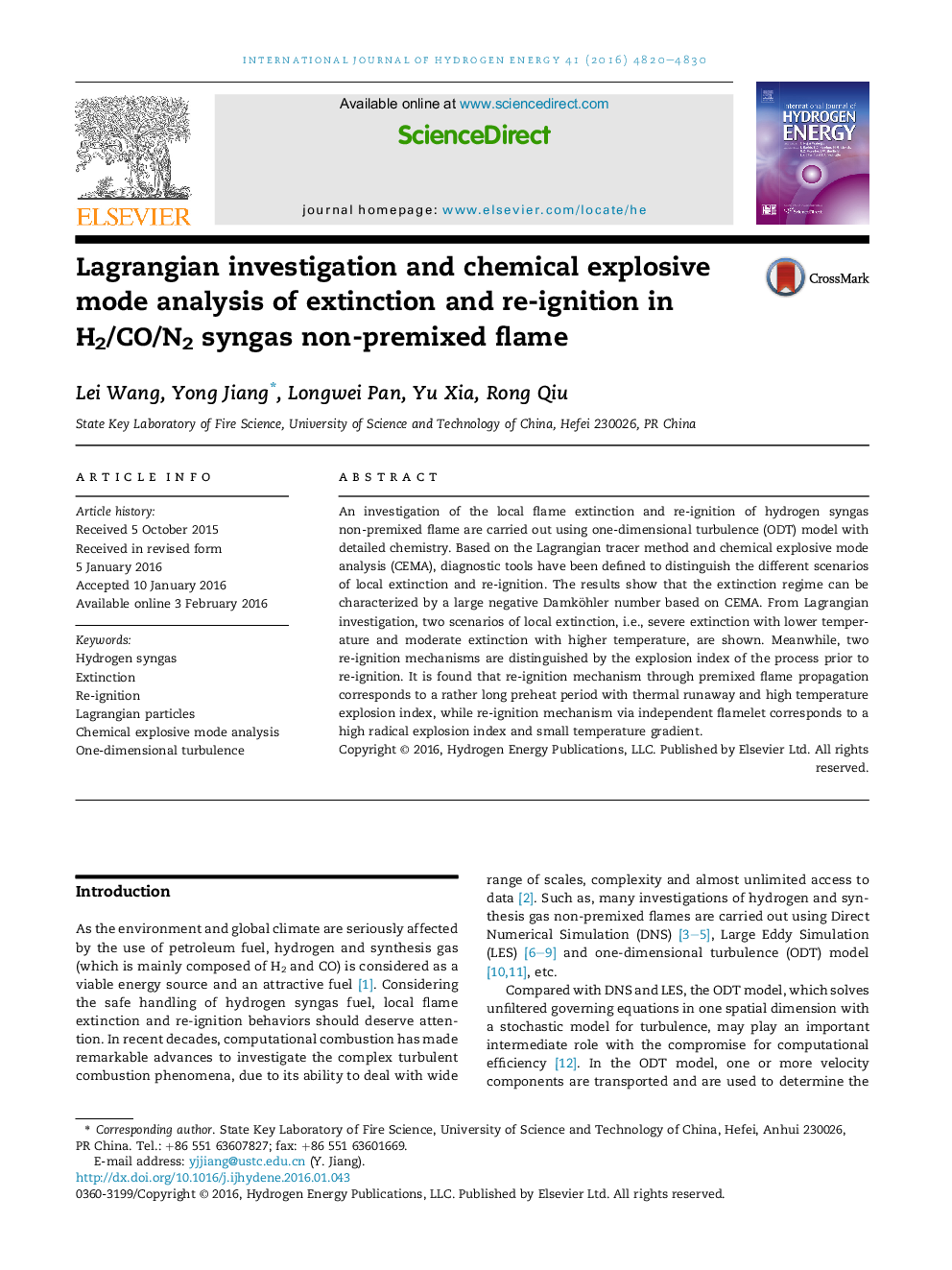| Article ID | Journal | Published Year | Pages | File Type |
|---|---|---|---|---|
| 1271169 | International Journal of Hydrogen Energy | 2016 | 11 Pages |
•ODT model is performed in H2/CO/N2 syngas non-premixed flame.•Damköhler number based on chemical explosive mode analysis is used to identify flame extinction.•Diagnostic tools are defined to distinguish the different scenarios of local extinction and re-ignition.
An investigation of the local flame extinction and re-ignition of hydrogen syngas non-premixed flame are carried out using one-dimensional turbulence (ODT) model with detailed chemistry. Based on the Lagrangian tracer method and chemical explosive mode analysis (CEMA), diagnostic tools have been defined to distinguish the different scenarios of local extinction and re-ignition. The results show that the extinction regime can be characterized by a large negative Damköhler number based on CEMA. From Lagrangian investigation, two scenarios of local extinction, i.e., severe extinction with lower temperature and moderate extinction with higher temperature, are shown. Meanwhile, two re-ignition mechanisms are distinguished by the explosion index of the process prior to re-ignition. It is found that re-ignition mechanism through premixed flame propagation corresponds to a rather long preheat period with thermal runaway and high temperature explosion index, while re-ignition mechanism via independent flamelet corresponds to a high radical explosion index and small temperature gradient.
